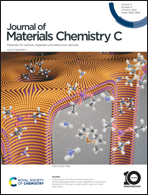Metal–organic framework-derived photoelectrochemical sensors: structural design and biosensing technology
Abstract
Metal–organic frameworks (MOFs) take on highly ordered self-assembled structures and have gained much attention due to their intriguing structural features and enormous applications. Typical features of MOFs include large surface areas, nanoporosity, tunable size and shape, and reliable host–guest interactions, making them demanding candidates in sensor applications. Moreover, MOFs offer an opportunity to upgrade selectivity toward certain analytes in response to various chemical and physical stimulations. In this review, we have elaborated on the structural features of MOFs for biological sensing and the MOF-analyte interaction originating from the inherent porosity, vacancy defects, or abundance functional groups. Also, we summarize the state-of-the-art progress on MOF-based sensors applied in healthcare, food safety, environmental monitoring, and pharmaceutics, category by transduction mechanisms involving optical, electrochemical, and plasmons. In addition, we have discussed in detail the possible applications of MOF-based material for identifying high performance and detecting food freshness, industrial gas leakage, and medical diagnostics. Finally, current limitations regarding sensing performance in practical applications are also overviewed. Thus, this literature review will open new doors for chemists or bioengineers to tune the structural features further to modulate the sensing ability of low-cost materials for biosensing applications in future endeavors.

- This article is part of the themed collection: Journal of Materials Chemistry C Recent Review Articles


 Please wait while we load your content...
Please wait while we load your content...